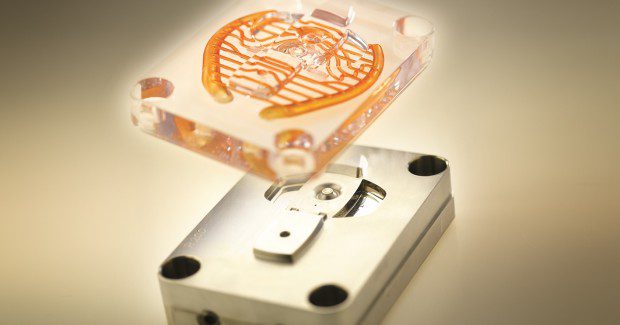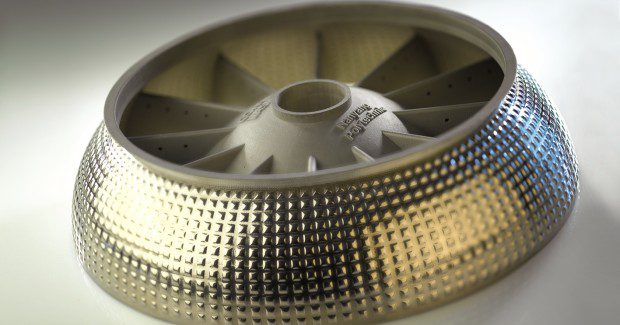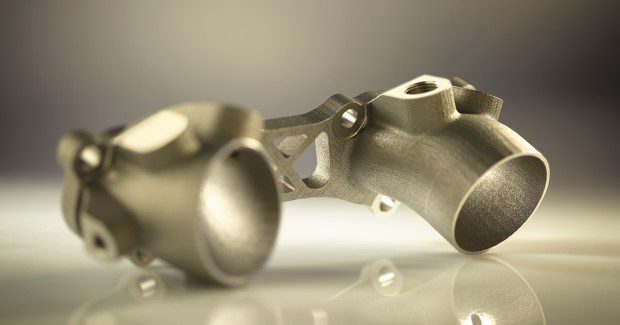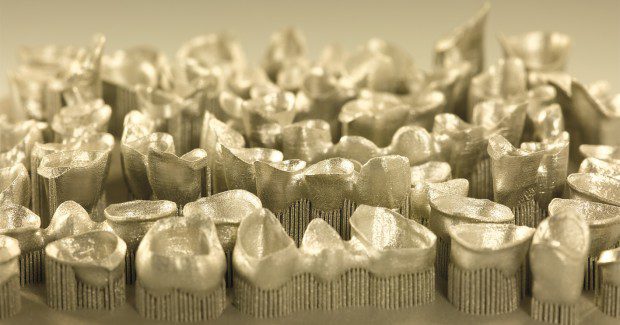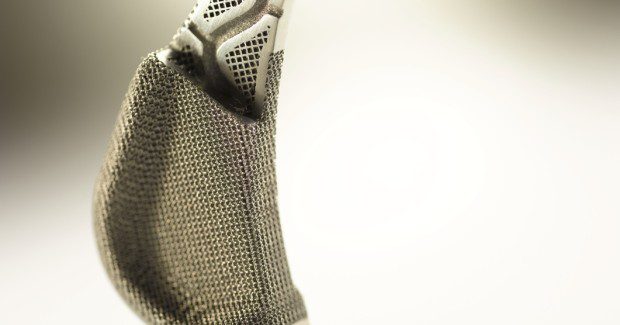Make This to Print
How the technology and trends in additive manufacturing are changing the production methods of the future.
Posted: June 2, 2015
Does all of the excitement being generated by 3D printers signal a departure from a form-based way of thinking in favor of the geometrical freedom of components produced using additive methods? What can realistically be accomplished by the laser melting of materials in an industrial setting?
Complex industrial additive systems involve a wide-ranging interplay between optics, design, control technology, software and the powder material. The automotive, medical and aerospace sectors are defining and driving this process forward by demanding high standards in the quality and choice of materials, plus increased productivity through shorter construction times and more parts in a single build chamber.
Thus we see the transition to larger work envelopes with higher-power lasers to save time in printing engine components for vehicles. Thus we see innovation thriving in aerospace, where reactive materials such as titanium or aluminum-based alloys can only be produced reliably to a high quality right now inside a closed system. NASA engineers are even considering how to print components on the International Space Station while it is in orbit. Think about that for a moment: producing parts in space using CAD data, provided there is a sufficient stock of powder.
https://youtu.be/llzdGiRDXKM
Thus we see a revolution in medical technology, where printed implants are in demand because their porous surfaces incorporate well into the body but also provide the necessary elasticity. Where affordable, highly adaptable and long-lasting dental prosthetics are being rapidly printed from biocompatible materials to replace the old manually crafted prosthetics that took so much effort.
Thus we see changes in retrofitting, where printing adds hybrid layers of the exact same material to the existing part so that worn-out turbine parts can be quickly and affordably regenerated for power plant engineering and aircraft construction. And beyond regeneration, we see new whole parts being printed for turbine technology applications, because printing allows functions such as cooling channels to be integrated to improve the performance of components.
Thus we see the offshore industry considering installing additive systems on drilling platforms for independent, on-site production of certain components because printing technology is not fixed to a specific location and can be operated locally. And speaking of offshore innovation, what about environmental friendliness? 3D printing is highly sustainable green technology because its localized production options reduce logistic complexity and the process itself reduces the quantity of material required. No oil or coolant emissions, as is often still the case in mechanical engineering processes. Even the residual heat can be used: a 1,000 W laser produces approximately 4 kW of heat that can be used by building systems if channeled into a cooling water circuit.
The scope of additive applications is growing, which means the range of materials being printed is expanding as well. Supporting the dynamics behind this growth requires strong consulting services from equipment suppliers, because the printing system must be repeatedly adjusted to accommodate new materials while, at the same time, design requirements for components are also becoming more demanding, ranging from lightweight construction and largely foam structures to functional integration, such as the cooling technology mentioned earlier.
These dynamics revolve around the increasing importance of quality among users who now expect active process monitoring and series production capability from their systems, i.e., reproducibility at an industrial level in terms of part geometry, density and system productivity. This level of quality requires (1) active process monitoring using machine technology and (2) developments in materials, which includes the certification of materials, such as in medical technology, or manufacturer-specific instructions, which must be complied with in the automotive and aerospace sectors.
From the machine technology side, there is a two-system approach to active, comprehensive quality monitoring that involves checking, comparing, analyzing and evaluating process data in real-time. One system uses a camera and photo diode to record signals during the laser process. This data can then be compared to reference values. The optical system is designed coaxially to allow the camera to record a very small area of the melting pool approximately 1×1 sq mm. In other words, it takes a very detailed picture to detect impaired laser performance due to contamination of the F-theta lens or caused by natural aging of the laser, as well as deviations in the dosing factor.
The second system ensures that the optimal quantity of powder material is used. Only what is needed is used, which saves up to 25 percent powder material and reduces set-up times. This system monitors the layer surface while powder is being applied. If too little or too much powder is dosed, the dosing factor is adjusted accordingly, i.e., actively counteracted. Together, these two systems monitor and document the process, thereby ensuring reproducible quality.
This is only the beginning. Future 3D printing innovations lie in the general “component map” area of process signal analysis, where 2D maps are generated during the construction process and must ultimately be represented in 3D models. This is comparable to the images from CT measurement, which is computer tomography similar to that used in medical technology. This mode of imaging and capability would increase the transparency of the process and capture the component in its structural entirety – transparency in a highly dynamic, rapid process, which operators can only master with special aids.
The future will also see increasing speed in component construction through higher laser output and the use of multiple lasers. Multiple laser sources will be able to significantly increase the build rate in the future, though the advantage of employing familiar process parameters must be weighed against the increasing complexity of the optical arrangement. These concepts involve multiplication not only of the lasers themselves, but also of most of the other optical components as well.



